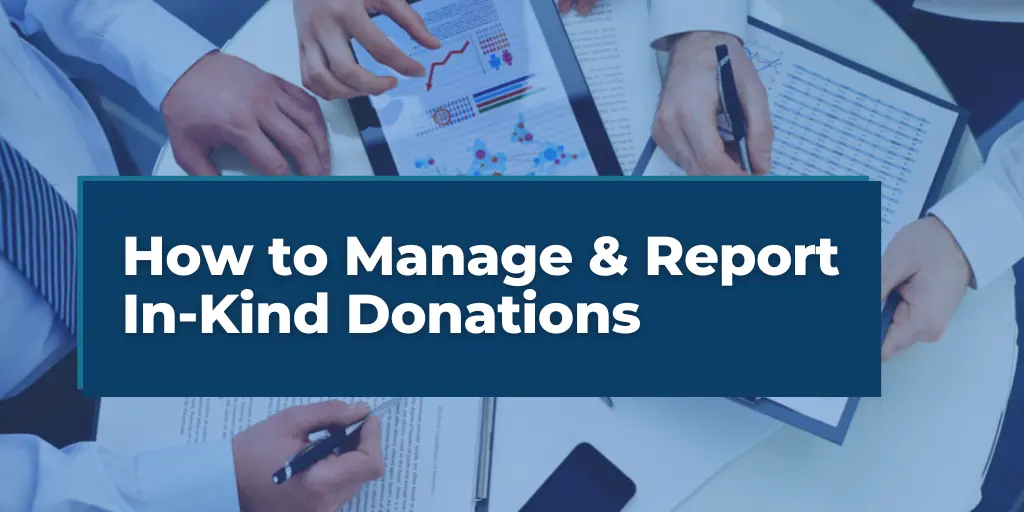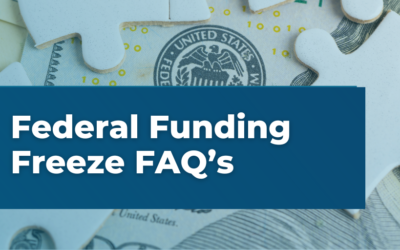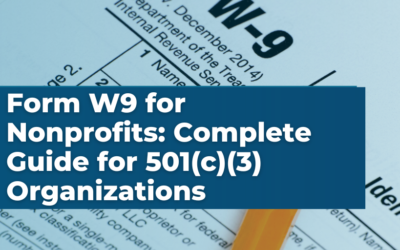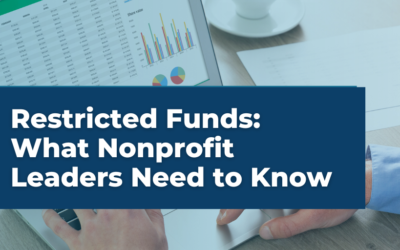How to Manage & Report In-Kind Donations
In the world of nonprofits, monetary donations often take the spotlight. However, in-kind donations are just as crucial to many organizations. These contributions, which encompass goods, services, or time rather than direct financial assistance, play an instrumental role in the success of many nonprofit initiatives.
What is an In-Kind Donation?
An in-kind donation refers to a contribution made in the form of goods, services, or time, rather than in monetary terms. Unlike cash donations, which provide nonprofits with the flexibility to allocate funds as they see fit, in-kind donations fulfill specific needs by directly providing items or expertise.
Characteristics of In-Kind Donations:
- Tangible or Intangible: While many in-kind donations are tangible, like clothing or books, they can also be intangible, such as professional services or intellectual property rights.
- Non-Monetary Value: They inherently carry value, though not in cash form. However, for reporting and acknowledgment purposes, a monetary value is often assigned to them based on fair market value or the service’s standard rates.
- Direct Utility: Typically, in-kind donations are directed towards a specific need or purpose within the nonprofit, such as furniture for a newly established office or expert training for the staff.
- Diverse Sources: They can come from individuals, businesses, or other organizations. For example, a local business might donate products, while an individual might contribute their professional skills pro bono.
Examples of Common In-Kind Contributions:
- Goods: This can range from office equipment, clothes for a drive, food for a pantry, to more specialized items like medical equipment for clinics.
- Professional Services: Lawyers, accountants, or designers offering their skills for free or at a discounted rate.
- Space: Donation of venue spaces for events or meetings, or even office space for the nonprofit’s operations.
- Advertising & Media: Local media outlets providing free advertising slots or reduced rates for nonprofit campaigns.
- Technology: Donations of software licenses, online platform access, or tech tools that can benefit the nonprofit’s operations.
- Training & Workshops: Professionals providing free training sessions or workshops to enhance the skills of the nonprofit’s staff or beneficiaries.
Why is Managing and Reporting In-Kind Donations Important?
Managing and reporting in-kind donations is more than just an administrative task; it’s a fundamental aspect of a nonprofit’s integrity, transparency, and fiduciary responsibility. Here’s why this is crucial:
- Enhancing Donor Trust and Relationship:
- Personal Connection: Recognizing and properly managing in-kind donations allows donors to see the direct impact of their contributions. When a donor provides a tangible item or service, witnessing its use and benefit can create a deeper personal connection to the cause.
- Acknowledgment: Properly managed in-kind donations ensure that donors are acknowledged appropriately. Timely and accurate recognition can strengthen the bond between the donor and the organization, encouraging future contributions.
- Ensuring Compliance with Accounting and Tax Regulations:
- Valuation Consistency: In-kind donations need to be valued accurately and consistently for financial reporting purposes. This is essential to avoid potential issues during audits or with tax authorities.
- Tax Implications: Donors may be eligible for tax deductions based on their in-kind contributions. Providing them with the necessary documentation and ensuring the reported value aligns with regulations is paramount.
- Demonstrating Transparency and Accountability:
- Openness: Regularly reporting on in-kind donations and their utilization demonstrates an organization’s openness about its resources and operations.
- Stakeholder Confidence: Stakeholders, including donors, volunteers, and beneficiaries, place their trust in transparent organizations. Accurate reporting of in-kind donations reinforces this trust.
- Reflecting the True Value and Operational Scale of the Organization:
- Holistic Representation: While cash donations often dominate financial statements, in-kind contributions can significantly bolster an organization’s operational scale. Properly accounted for, they provide a more holistic representation of the organization’s resources and capabilities.
- Operational Insights: Reporting these donations offers insights into non-monetary support the organization receives. This can guide strategy, highlighting areas with strong community support and those that might need more focus.
In essence, managing and reporting in-kind donations isn’t just a matter of keeping books straight. It’s about building and nurturing relationships, ensuring legal compliance, and showcasing the full scope of an organization’s support and impact.
How to Accurately Value In-Kind Donations
Valuating in-kind donations is one of the most critical tasks nonprofits encounter. Accurate valuation not only ensures that donors receive the proper acknowledgment for tax purposes but also that the organization’s financial reports are precise. Let’s delve into the methods used and address the inherent challenges in this process.
Methods to Determine Fair Market Value:
Comparative Pricing
This involves comparing the donated item with similar items on the open market. For instance, if a business donates office chairs, their value can be determined by researching the cost of similar chairs available for sale.
Professional Appraisals
For more valuable or unique items, like artwork or real estate, it’s often wise to get a professional appraisal to ascertain their worth.
Service Hourly Rates
When a professional donates their time, a standard approach is to use the typical hourly rate for that service in the area. For instance, if an accountant provides pro bono services, you’d use the prevailing hourly rate for accountancy in your region.
Discounted or Sale Value
Sometimes, items are donated when they’re on sale or at discounted rates. In such cases, it’s the actual discounted price, rather than the regular price, that should be considered for valuation.
Actual Cost to Donor
If the donor has a recent purchase receipt or can indicate the cost incurred to them for the item or service, this can also serve as a basis for valuation.
Proper Documentation and Record-Keeping
Maintaining robust records for in-kind donations isn’t just about being organized; it’s a foundational pillar ensuring compliance, transparency, and fostering donor relations. Proper documentation offers a detailed history, enabling the organization to reflect on its resources, make informed decisions, and provide requisite information for audits and regulatory checks. Here’s a guide on the essential documents to maintain and best practices for seamless record-keeping.
Essential Documents to Maintain
- Donation Receipts
- A formal acknowledgment given to the donor detailing the nature of the donation, its estimated value, the date of the donation, and any other relevant particulars. This receipt is crucial for donors who may wish to claim tax deductions.
- Professional Appraisals
- For items that demand a professional valuation (like art, real estate, or rare artifacts), it’s essential to keep a copy of the appraisal report, which provides an expert’s assessment of the item’s value.
- Agreements or Contracts
- If the in-kind donation comes with specific terms or conditions (like the use of a venue for certain dates), these agreements should be documented and stored safely.
- Internal Valuation Assessments
- For items that the organization values internally (like smaller tangible goods), keeping a record of how the valuation was determined can be useful for future reference and audits.
- Correspondence
- Retain all emails, letters, or other forms of communication related to the in-kind donation. These can offer context, elucidate donor intent, or clarify specifics about the donation.
Best Practices for Organized and Consistent Record-Keeping
- Centralized Storage
- Use a single, centralized system or location to store all documentation related to in-kind donations. This could be a dedicated physical filing cabinet, a secure digital storage solution, or specialized donation management software.
- Regular Updates
- Ensure that documentation is updated regularly, preferably immediately after receiving an in-kind donation. Promptness prevents backlogs and ensures accuracy.
- Categorization
- Organize documents by donation type, donor, date, or any other method that suits the organization’s operations. Proper categorization expedites retrieval and review.
- Backup Systems
- If using digital storage, always maintain backups. Cloud-based solutions often offer automatic backup features. For physical files, consider digitizing them as a backup.
- Retention Schedules
- Familiarize yourself with regulations regarding how long certain documents should be retained. For instance, tax-related documents often have a specific retention period.
- Confidentiality
- Ensure that personal or sensitive data related to donors is kept confidential. Access to these records should be restricted to authorized personnel only.
- Review & Audit
- Periodically review the documentation system to identify gaps, redundancies, or areas for improvement. Regular internal audits can ensure adherence to best practices and readiness for external audits.
By treating documentation and record-keeping as a priority, nonprofits not only ensure compliance and transparency but also lay the groundwork for robust operational efficiency and fortified donor relationships.
Reporting In-Kind Donations on Financial Statements
In-kind donations, like all other assets and contributions, must be accurately reflected in a nonprofit’s financial statements. Properly reporting these donations not only ensures transparency but also provides stakeholders with a comprehensive view of the organization’s resources and operations. Here’s a breakdown of how to incorporate in-kind donations in various sections of a nonprofit’s financial statements:
Incorporating In-Kind Donations in the Statement of Activities
Recognition as Revenue
Upon receipt, in-kind donations should be recognized as both revenue and expense (or asset, if applicable) in the Statement of Activities. This reflects the increase in resources and the subsequent use or allocation of these resources.
Categorization
Depending on the nature of the in-kind donation, it can be categorized under various headers such as donated services, donated assets, or donated use of facilities.
Value Representation
The donations are recorded at their fair market value at the time of the donation. This provides a consistent measure for all in-kind donations.
Treatment of In-Kind Donations in the Statement of Financial Position
Asset Recognition
If the in-kind donation is a tangible asset that will be used over a period (like equipment or property), it should be recognized as an asset on the Nonprofit Balance Sheet
Liabilities and Equity
If there are stipulations associated with the donation, such as a requirement to use a donated venue within a particular timeframe, it may be recorded as a liability until the stipulation is fulfilled. Once fulfilled, it’s reclassified as unrestricted net assets.
Depreciation
Tangible assets like machinery or property should be depreciated over their useful life. This depreciation expense will be reflected in subsequent financial statements.
Notes and Disclosures Related to In-Kind Donations
Description of Donations
Detailed notes should be provided describing the nature and purpose of the in-kind donations. For instance, notes can specify if donations were in the form of professional services, tangible goods, or use of facilities.
Valuation Method
The notes section should elucidate the method used to determine the fair market value of the in-kind donations. Whether it was based on comparative pricing, professional appraisals, or standard hourly rates, clarity here ensures transparency.
Usage and Allocation
If applicable, specify how the in-kind donation was used or allocated during the reporting period. For example, if donated software licenses were distributed among various departments, this allocation can be noted.
Restrictions or Stipulations
Any conditions or restrictions attached to the in-kind donations should be disclosed, offering clarity on how the donation can be used and any associated timelines.
Recognizing and Appreciating In-Kind Donors
The lifeline of any nonprofit lies not just in its mission but also in its supporters. Donors, especially those providing in-kind contributions, bring a unique blend of material, skills, and resources, all invaluable to the organization’s goals. Recognizing their efforts and nurturing a bond with them is vital for the long-term sustainability and growth of the nonprofit.
Importance of Donor Acknowledgment
- Deepens Relationships: Proper acknowledgment goes beyond mere gratitude; it builds and strengthens the relationship between the donor and the organization, fostering a deeper connection to the mission and vision.
- Encourages Future Donations: A donor who feels recognized and appreciated is more likely to contribute again, ensuring continuous support for the organization.
- Enhances Reputation: A culture of acknowledgment and gratitude positively impacts the nonprofit’s reputation, making it more appealing to potential donors.
- Fulfills a Moral Obligation: Beyond the strategic importance, recognizing donors is a moral obligation. It’s the right thing to do, honoring the generosity and intention behind every donation.
Strategies to Ensure Donors Feel Valued and Are Encouraged to Contribute in the Future
- Personalized Thank-You Notes: A handwritten or personalized note can have a lasting impact. It conveys genuine appreciation and signifies the donor’s importance to the organization.
- Public Recognition: While respecting donor privacy, consider acknowledging donors in newsletters, annual reports, or on the organization’s website. Plaques, donor walls, or naming opportunities (like naming a room after a significant donor) can also be effective.
- Invitations to Special Events:I Host appreciation events or invite donors to significant organizational events. This not only shows gratitude but also allows donors to witness the impact of their contributions firsthand.
- Regular Updates: Keep donors informed about how their in-kind contributions are being used. A simple report, newsletter, or even a photo can provide donors with a tangible connection to the results of their generosity.
- Feedback Mechanisms: Allow donors to share their experiences, thoughts, and suggestions. This open channel of communication makes them feel valued and gives the organization insights for improvement.
- Personal Interactions: Foster a culture where organizational leaders and staff engage with donors directly. Casual check-ins, greetings during holidays, or just updates can create a bond beyond monetary or material transactions.
- Exclusive Previews: Give donors a sneak peek into upcoming projects, initiatives, or organizational developments. This sense of inclusivity and insider knowledge further ties them to the organization’s journey.
In the realm of nonprofits, where every bit of support counts, the significance of in-kind donors is profound. Acknowledging and appreciating them is not just about ensuring future donations; it’s about building a community bound by a shared vision and mutual respect.
Potential Challenges and Pitfalls
Managing and reporting in-kind donations might seem straightforward, but the process is rife with complexities that can ensnare even the most diligent nonprofits. Understanding common mistakes and arming oneself with strategies to address them is key to ensuring compliance, transparency, and donor trust.
Common Mistakes Nonprofits Make in Managing and Reporting In-Kind Donations
- Over or Under Valuation: A frequent mistake, often stemming from misconceptions about the item’s value or a lack of proper research. Misvaluation not only distorts financial reports but can also affect donor relations.
- Inadequate Documentation: Not maintaining proper records or losing crucial documents can pose issues during audits and affect transparency.
- Failure to Acknowledge Donors: Overlooking or delaying acknowledgment can make donors feel undervalued, impacting future donations and relationships.
- Overlooking Stipulations: Donations may come with specific stipulations or conditions. Not adhering to these can lead to complications, both legally and in donor relations.
- Improper Reporting on Financial Statements: Misrepresenting in-kind donations on financial statements can mislead stakeholders and potentially violate compliance standards.
- Not Regularly Reviewing In-Kind Donation Policies: As regulations, market values, and organizational needs evolve, failure to regularly review and update policies can lead to outdated practices.
How to Avoid or Address These Challenges
- Regular Training: Provide regular training to staff on how to value and document in-kind donations. Staying updated on best practices and regulations is crucial.
- Use Technology: Implementing dedicated donation management software can streamline the process, reduce manual errors, and ensure consistent documentation.
- Timely Donor Acknowledgment: Establish a system to promptly recognize and thank donors, ensuring they understand their value to the organization.
- Clear Communication: Always clarify any stipulations or conditions with donors upfront and maintain open lines of communication throughout the donation process.
- Consult Experts: When in doubt, especially for high-value or unique donations, consult with experts or professionals in the field. This ensures accurate valuation and adherence to best practices.
- Regular Audits: Periodically auditing in-kind donation records and financial statements ensures consistency, accuracy, and readiness for any external audits or reviews.
- Feedback and Reviews: Encourage feedback from donors, stakeholders, and staff. Regularly reviewing and refining the donation management process can help identify and address potential pitfalls.
- Stay Updated: Regulations, accounting standards, and best practices can evolve. Nonprofits should ensure they’re always operating based on the latest guidelines and industry norms.
Conclusion
In the ever-evolving landscape of nonprofit operations, the complexities of in-kind donations require an adaptive and informed approach. Nonprofits must continuously review, reassess, and refine their donation practices, embracing the lessons that come with each contribution. However, while internal efforts are paramount, seeking external expertise can elevate your practices.
Leveraging the skills and knowledge of a nonprofit CPA becomes a game-changer in this context. These experts bring to the table an in-depth understanding of financial nuances and regulatory compliances associated with in-kind donations. Their guidance ensures not just compliance, but also the accurate valuation, optimal utilization, and rightful recognition of every contribution.
To all nonprofits, we urge you to leverage every tool at your disposal, from internal reviews to the expertise of CPAs, to navigate the world of in-kind donations with confidence and clarity. Cultivate a culture of gratitude, transparency, and continuous learning. In doing so, you’ll not only honor the generosity of your donors but also fortify the foundation upon which your impactful endeavors stand.





